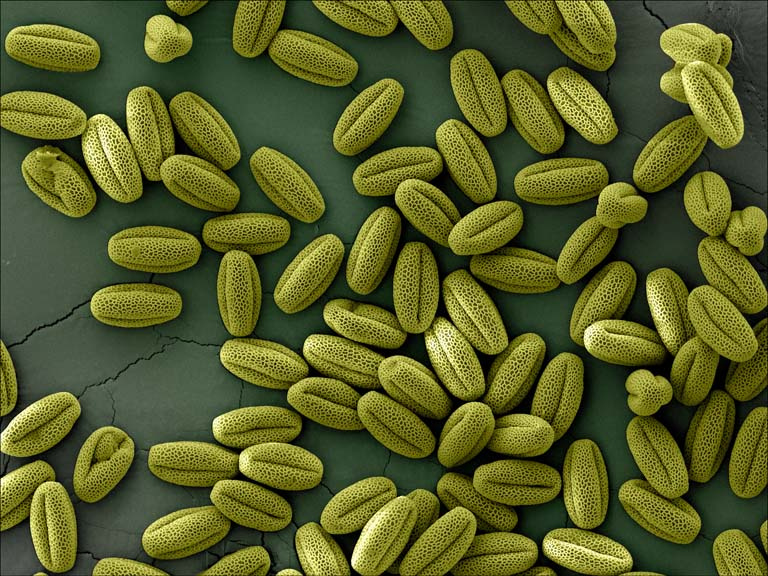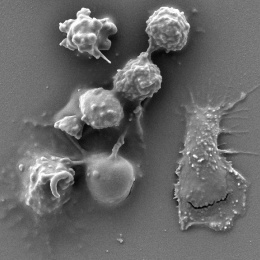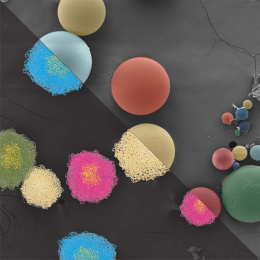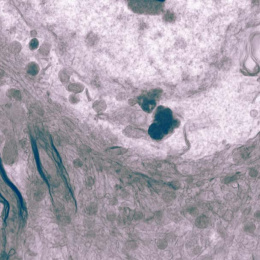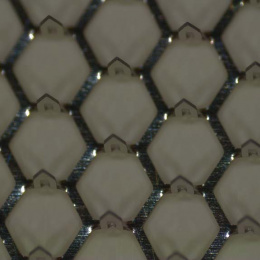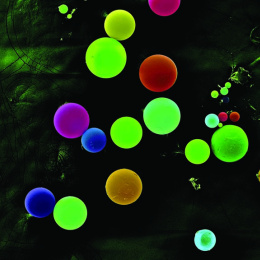Mutant Lamina 4
Mutant Lamina 4
Junsik Choi (research and material), David Mankus (microscopy and image processing), Mary Gehring, Abigail Lytton-Jean
Koch Institute at MIT, Whitehead Institute
The nuclear lamina is a meshwork protein structure under the cell nuclear membrane. It is important for molecular interactions with DNA/proteins and organism's viability. Without the lamina, humans cannot survive more than 20 years in most cases. Surprisingly, plants developed their own version of the nuclear lamina, which consists of totally different proteins from human's but doing similar functions. And the plant lamina is also essential for viability of plants. Here, I showed mutant Arabidopsis thaliana pollen where some nuclear lamina proteins are missing. You can see some dysmorphic pollen look crushed. This shows that the plant nuclear lamina is crucial for pollen production, which is necessary for successful reproduction. This is a good example how the evolution shape cells and how cells' needs are reflected into their structure throughout the evolution.
